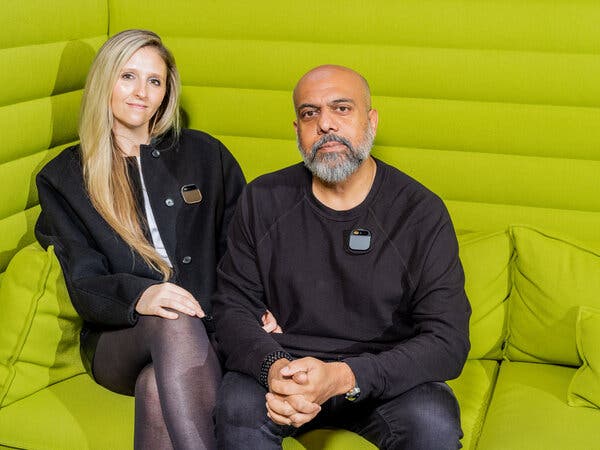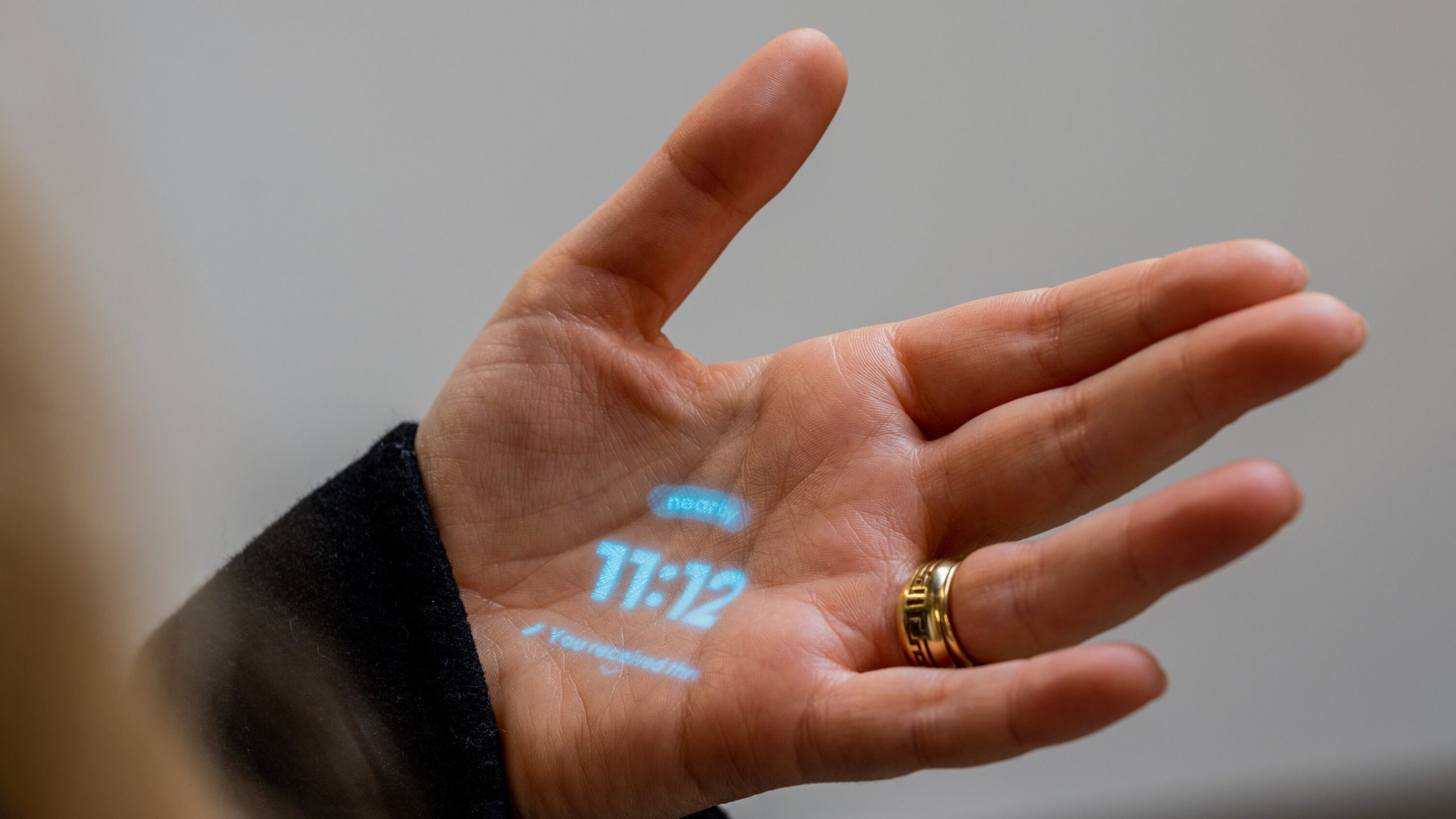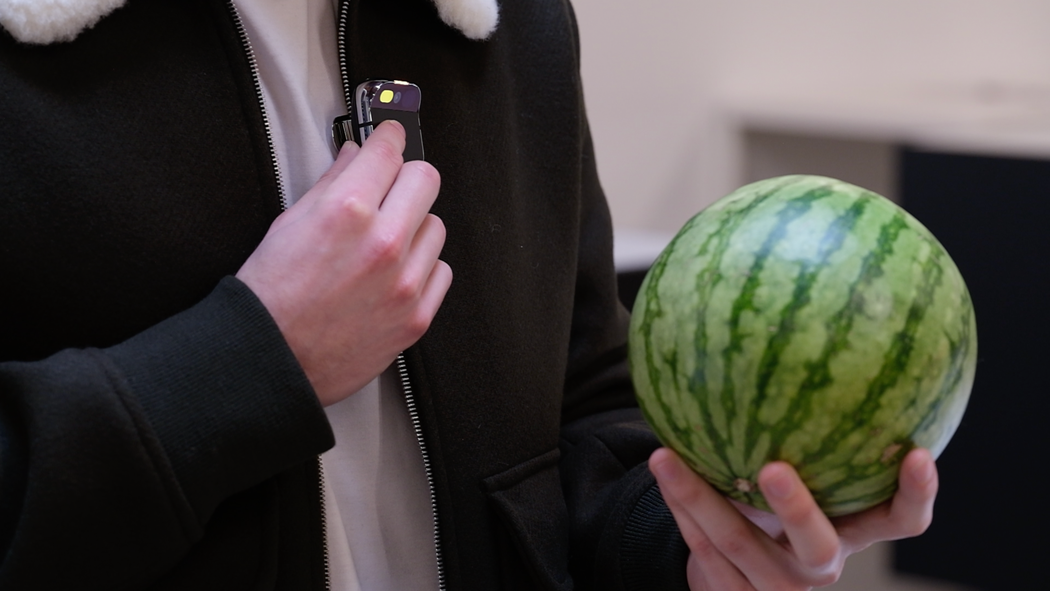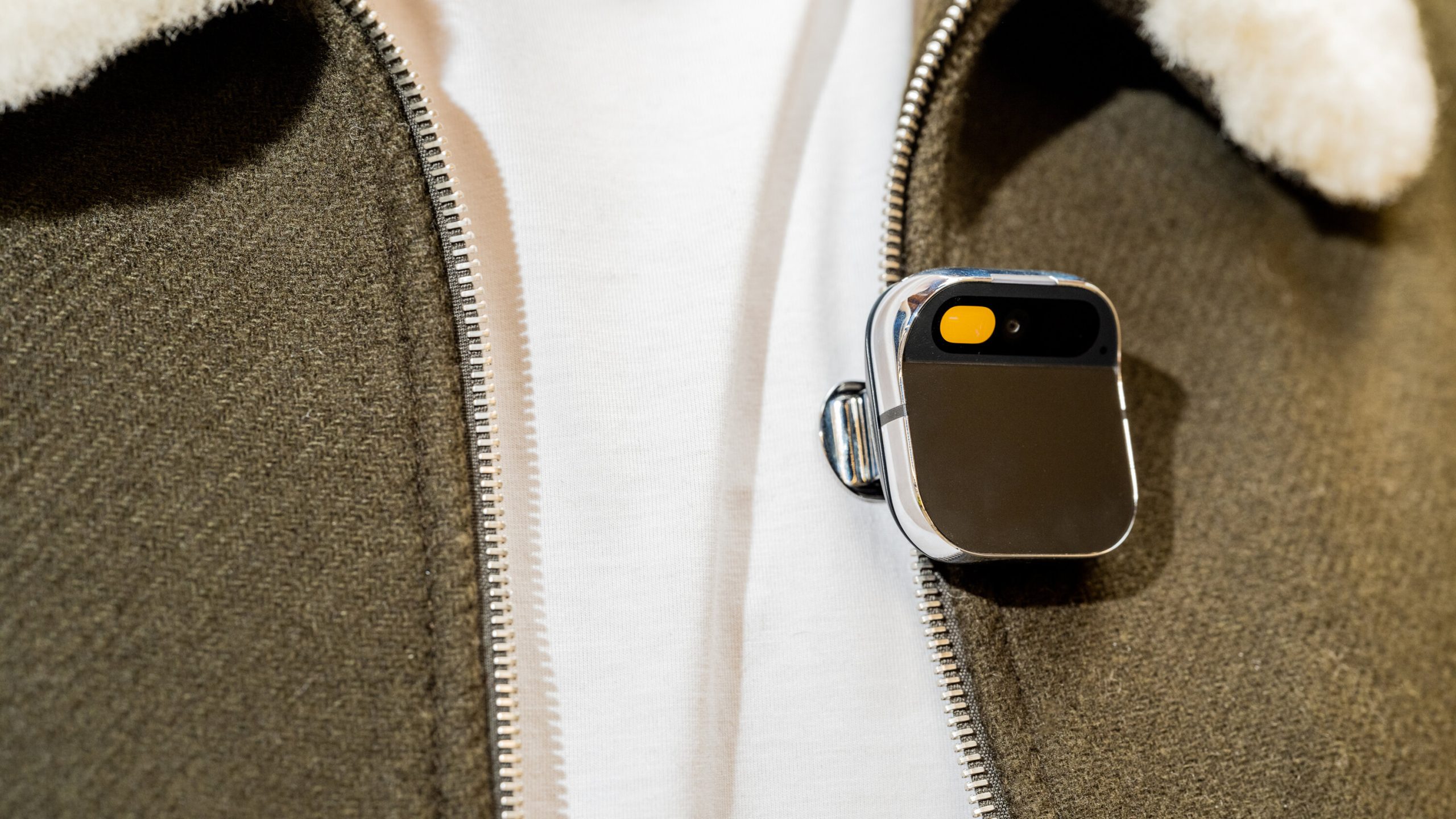
Silicon Valley’s Big, Bold Sci-Fi Bet on the Device That Comes After the Smartphone
Inside a former horse stable in the San Francisco neighborhood of SoMa, a wave of gentle chirps emerged from small, blinking devices pinned to the chests of employees at a start-up called Humane.
It was just weeks before the start-up’s gadget, the Ai Pin, would be revealed to the world — a culmination of five years, $240 million in funding, 25 patents, a steady drumbeat of hype and partnerships with a list of top tech companies, including OpenAI, Microsoft and Salesforce.
Their mission? No less than liberating the world from its smartphone addiction. The solution? More technology.
Imran Chaudhri and Bethany Bongiorno, Humane’s husband-and-wife founders, envision a future with less dependency on the screens that their former employer, Apple, made ubiquitous.
Artificial intelligence “can create an experience that allows the computer to essentially take a back seat,” Mr. Chaudhri said.
They’re billing the pin as the first artificially intelligent device. It can be controlled by speaking aloud, tapping a touch pad or projecting a laser display onto the palm of a hand. In an instant, the device’s virtual assistant can send a text message, play a song, snap a photo, make a call or translate a real-time conversation into another language. The system relies on A.I. to help answer questions (“What’s the best way to load the dishwasher?”) and can summarize incoming messages with the simple command: “Catch me up.”
The technology is a step forward from Siri, Alexa and Google Assistant. It can follow a conversation from one question to the next, without needing explicit context. It’s also capable of editing a single word in a dictated message, rather than requiring the user to correct an error by repeating the text from beginning to end, as other systems do. And it does it from a gadget that’s reminiscent of the badges worn in Star Trek.
To tech insiders, it’s a moonshot. To outsiders, it’s a sci-fi fantasy.
At Humane, there’s deep anxiety about the weeks ahead. The tech industry has a large graveyard of wearable products that have failed to catch on. Humane will begin shipping the pins next year. It expects to sell around 100,000 pins, which will cost $699 and require a $24 monthly subscription, in the first year. (Apple sold 381,000 iPods in the year after its 2001 launch.)
For the start-up to succeed, people will need to learn a new operating system, called Cosmos, and be open to getting new phone numbers for the device. (The pin comes with its own wireless plan.) They’ll need to dictate rather than type texts and trade a camera that zooms for wide-angle photos. They’ll need to be patient because certain features, like object recognition and videos, won’t be available initially. And the pin can sometimes be buggy, as it was during some of the company’s demos for The New York Times.
Sam Altman, OpenAI’s chief executive, said in an interview that he expected A.I. to be “a huge part” of how we interact with computers. He has invested in Humane as well as another A.I. company, Rewind AI, that plans to make a necklace that will record what people say and hear. He’s also discussed teaming up with Jony Ive, Apple’s former chief designer, to create an A.I. gadget with a similar ambition to Humane.
Humane has the advantage of being the first of those A.I.-focused devices to become available, but Mr. Altman said in an interview that was no guarantee of success. “That will be up to customers to decide,” he said. “Maybe it’s a bridge too far,” he said, “or maybe people are like, ‘This is much better than my phone.’” Plenty of technology that looked like a sure bet ends up selling for 90 percent off at Best Buy, he added.
iPhone Guilt

Ms. Bongiorno, 40, and Mr. Chaudhri, 50, have a marriage of contrasts. He shaves his head bald and speaks with the soft, calm voice of a yogi. She sweeps her long blonde hair over one shoulder and has the enthusiasm of a team captain. They both dress in Jobsian black.
They met at Apple in 2008. Mr. Chaudhri was working on its human interface, defining the swipes and drags that control iPhones. Ms. Bongiorno was a program manager for the iPhone and iPad. They worked together until they left Apple in late 2016.
A Buddhist monk named Brother Spirit led them to Humane. Mr. Chaudhri and Ms. Bongiorno had developed concepts for two A.I. products: a women’s health device and the pin. Brother Spirit, whom they met through their acupuncturist, recommended that they shared the ideas with his friend, Marc Benioff, the founder of Salesforce.
Sitting beneath a palm tree on a cliff above the ocean at Mr. Benioff’s Hawaiian home in 2018, they explained both devices. “This one,” Mr. Benioff said, pointing at the Ai Pin, as dolphins breached the surf below, “is huge.”
“It’s going to be a massive company,” he added.
Humane’s goal was to replicate the usefulness of the iPhone without any of the components that make us all addicted — the dopamine hit of dragging to refresh a Facebook feed or swiping to see a new TikTok video. They experimented in secret with hardware components and built a virtual assistant, like Siri or Alexa, working with customized language models based, in part, on OpenAI’s offerings.
The device’s most sci-fi element — the laser that projects a text menu onto a hand — started inside a box the size of a matchbook. It took three years to miniaturize it to be smaller than the size of a golf tee.
Humane established a company culture that borrowed from Apple, including its secretiveness. During its experimentation phase, the start-up created intrigue by announcing high profile investors like Mr. Altman and making grandiose — if vague — public statements about building “the next shift between humans and computing.” Humane also retained Apple’s obsession with design details, from its device’s curved corners and compostable white packaging to the Japanese-style toilets at the company’s stark office.
But Humane departed from Apple’s rigid and demanding culture in certain ways. The company encouraged staff to work together, question plans and speak up.
José Benitez Cong, a longtime Apple executive who considered himself retired, joined Humane, in part, for redemption. Mr. Benitez Cong said he was “disgusted” by what the iPhone had done to society, noting his son could mimic a swiping motion at the age of 1. “This could be something that could help me get over my guilt of working on the iPhone,” Mr. Benitez Cong said.
Holding the Light

A haunting whoosh filled the room, and two dozen Humane employees, seated around a long white table, carefully concentrated on the sound. It was just before the Ai Pin’s release, and they were evaluating its rings and beeps. The pin’s “personic” speaker (a company portmanteau of “personal” and “sonic”) is critical, since many of its features rely on verbal and audio cues.
Mr. Chaudhri praised the “assuredness” of one chirp noise and Ms. Bongiorno complimented the “more physical” sounds for the pin’s laser. “It feels like you’re actually holding the light,” she marveled.
Less assuring: That whoosh, which plays when sending a text message. “It feels ominous,” Ms. Bongiorno said. Others around the table said it sounded like a ghost, or as if you made a mistake, almost. Someone thought it was a Halloween joke.
Ms. Bongiorno wanted the sound for sending a text to feel as satisfying as the trash-can sound on one of Apple’s older operating systems. “Like ‘thunk,’” she said.
The device is arriving at a time when excitement and skepticism for A.I. hit new highs each week. Industry researchers are warning of the technology’s existential risk and regulators are eager to crack down on it.
Yet investors are eagerly pouring cash into A.I. start-ups. Before Humane even released a product, its backers had valued it at $850 million.
The company has tried to promote a message of trust and transparency, despite spending most of its existence working in secret. Humane’s Ai Pins have what the company calls a “trust light” that blinks when the device is recording. (A user must tap the pin to “wake” it.) Humane said it does not sell user data to third parties or use it in training its A.I. models.
In the months leading up to its introduction, Humane has fanned the anticipation. In April, Mr. Chaudhri showed off the pin’s laser projector during a TED Talk. (People later accused him of faking the demo, he said, but he assured that it was real.) In September, in an echo of Apple’s fashion-friendly launch of its Watch, the supermodel Naomi Campbell wore Humane’s pin — barely noticeable without knowing to look for it — on a gray Coperni blazer on the runway at Paris Fashion Week.
A.I. App Store
Humane’s supporters have a pat way of dismissing skepticism about its prospects — they invoke the first iPod. That clunky, awkward device had just one use, playing songs, but it laid the groundwork for the real revolution, smartphones. Similarly, Humane envisions an entire ecosystem of companies building features for its operating system — an A.I. version of Apple’s App Store.
But first, raisins. In a demo at Humane’s office of a feature that will be rolled out in a future version of the product, a software designer picked up a chocolate chip cookie and tapped the pin on his left breast. As it whirred to life with a beep, he asked, “How much sugar is in this?”
“I’m sorry; couldn’t look up the amount of sugar in oatmeal raisin cookie,” the virtual assistant said.
Mr. Chaudhri shrugged off the mistake. “To be fair, I have trouble with the difference between a chocolate chip cookie and an oatmeal raisin.”

Humane’s ambition to disrupt the smartphone is audacious, creative and even irrational; the kind of thing Silicon Valley is supposed to be known for, but, which critics bemoan, in recent years has turned into incremental frivolities, like selfie apps and robot pizza trucks.
But even after months of wearing their Ai Pins all day, Humane’s founders can’t fully detach from their screens. “Are we using our smartphones less?” Mr. Chaudhri asked. “We’re using them differently.”

